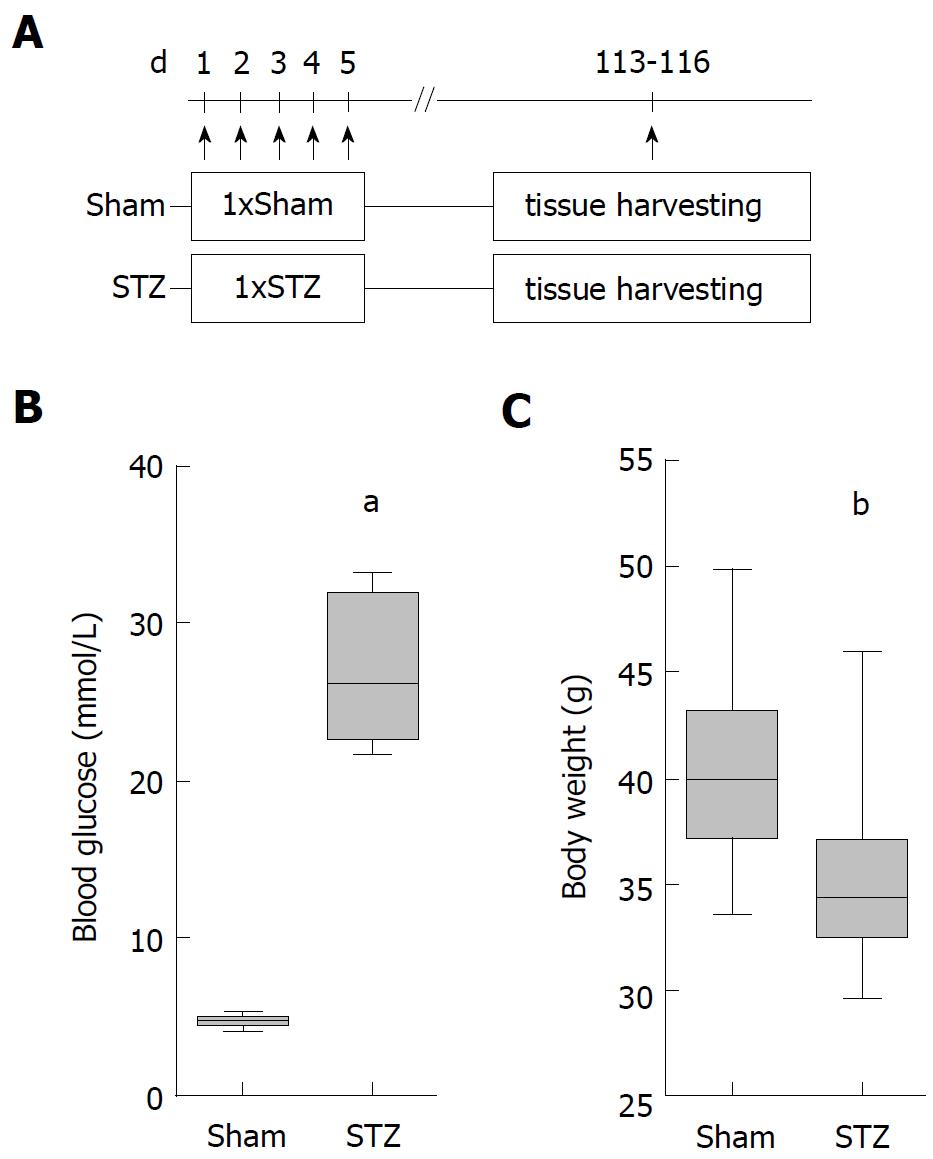Copyright
©The Author(s) 2018.
World J Gastroenterol. Jul 28, 2018; 24(28): 3120-3129
Published online Jul 28, 2018. doi: 10.3748/wjg.v24.i28.3120
Published online Jul 28, 2018. doi: 10.3748/wjg.v24.i28.3120
Figure 1 Experimental protocol of the hyperglycemic autoimmune pancreatitis model.
28-40 wk old- MRL/MpJ mice were intraperitoneally (ip) injected with streptozotocin on day 1-5 (group: STZ), while one age-matched control cohort was ip injected with the appropriate vehicle (group: Sham). The tissue was harvested on day 113-116; (A) Treatment with STZ increased the blood glucose concentration; (B) and reduced the body weight on day 113-116; (C) Box plots indicate the median, the 25th and 75th percentiles in the form of a box, and the 10th and 90th percentiles as whiskers. The number of animals evaluated was n = 19 (Sham) and n = 17 (STZ). Differences between the indicated cohorts are indicated as significant. aP < 0.001; bP = 0.009. STZ: Streptozotocin-treated.
- Citation: Müller-Graff FT, Fitzner B, Jaster R, Vollmar B, Zechner D. Impact of hyperglycemia on autoimmune pancreatitis and regulatory T-cells. World J Gastroenterol 2018; 24(28): 3120-3129
- URL: https://www.wjgnet.com/1007-9327/full/v24/i28/3120.htm
- DOI: https://dx.doi.org/10.3748/wjg.v24.i28.3120









